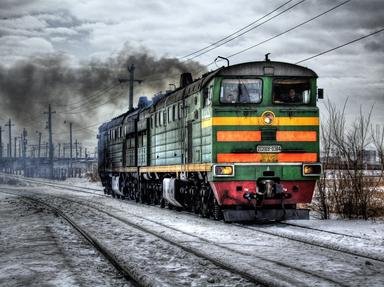Quiz Answer Key and Fun Facts
1. As we approach Berlin under the clouds, we see a so-called "outer ring" rail route. But why was this circular route built?
2. As we approach the centre of Berlin we see an inner rail ring encircling the city centre. What was the purpose of this original ring?
3. Waiting for our bags we see in our guidebook that Berlin in its heyday had many terminus stations, one major one being the "Anhalter Bahnhof". ("Bahnhof" means "station" in German). But why was this station so called?
4. Berlin landmarks: the Anhalter Bahnhof was rebuilt in 1880 to a design by architect Franz Schwechten. But which landmark also came from his drawing board?
5. We take an underground train to Potsdamer Platz and, using a map, we walk past some bits of the Wall to the location of the Anhalter Bahnhof. We might wish to check the map again once we arrive there. Why?
6. We take the S-Bahn train to Friedrichstrasse station. That "S" stands for something - but what is that missing German word for which is stands?
7. We arrive at Friedrichstrasse station. What was unusual about it in the days of the Wall?
8. "Berlin Hauptbahnhof" was the title of the present "Ostbahnhof" from 1987 to 1998. We travel through a former terminus and current S-bahn station which is being comprehensively rebuilt as a new main station for the 21st century. Name the station which will become "Berlin Hauptbahnhof" and already carries the name.
9. We arrive at the Bahnhof Zoo station, in the centre of West Berlin. Which pop act was inspired to record the track "Zoo Station"?
10. Berlin had many terminus stations for lines radiating out in all directions. Of the following pairs of station names, some are real and some are made up. In which of the following name pairs are BOTH stations fictitious? (i.e the correct option to choose is the one where neither one nor the other station ever existed as a terminus in Berlin)
Which two names are made up?
Source: Author
patpending
This quiz was reviewed by FunTrivia editor
minch before going online.
Any errors found in FunTrivia content are routinely corrected through our feedback system.
